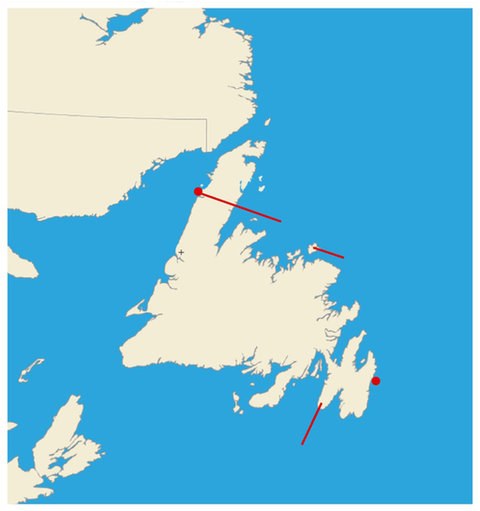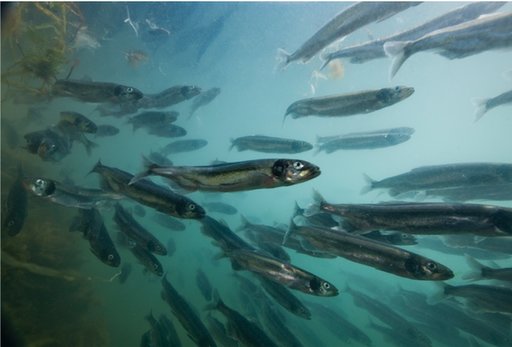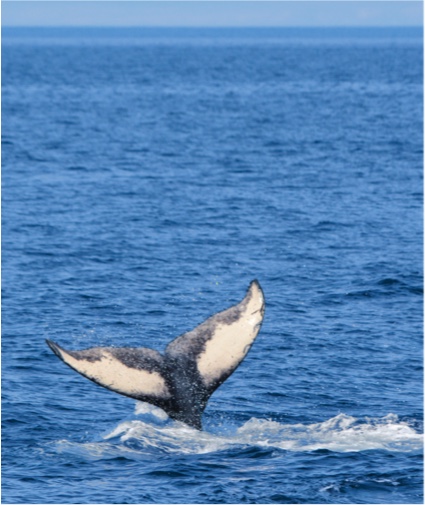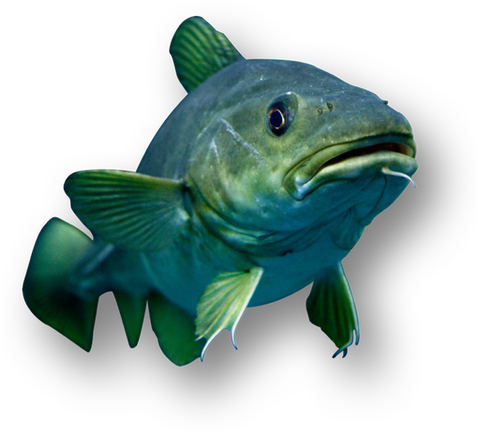
Labrador
Québec
Atlantic
Ocean
Newfoundland
Gros MorneMountain
Port au Choix
FogoIsland
GullIsland
Cape St. Mary's
100 kilometers
100 miles

North
America
Let’sgetonethingstraight:Iknowthatcariboudonotliveintheocean.Asamarinebiologist,Istudyoceananimals.IliveonanislandcalledNewfoundland.It’spartoftheprovinceNewfoundlandandLabradorineasternCanada.MyresearchtakesplaceintheNorthAtlantic Ocean.
Ofcourse,therearenocariboufloatingaroundintheocean.But,here’swhathappened.IwasvisitingthehistoricPortau Choixlighthouse.Theviewoftheoceanisincrediblethere.AsIwalkedaroundthelighthouse,Inearlyranintoasmallherdofcaribou!Theywerecalmlygrazingonthelighthouse grounds.
I’mnotembarrassedtoadmitit:Igeekedout.Caribouarehardtoseeinthewild.Theyare“shy,”andtheyavoidpeople.Toseesomanyatoncewasa big deal.
Idroppedtothegroundinfrontofthelighthouseandinchedforwardonmystomach.TherewasnowayIwasgoingtomissthis.Withmyheartracing,IfumbledformycameraandtookasmanyphotosasIcouldbeforethecaribougotwisetomeandmoved off.
Imaybeamarinebiologist,buthereonthisisland,Igetalotofchancestoseeamazinganimalsfromthesea,sky,andland.Letmetellyouaboutafewof them.
TheSea
It’stheseacreaturesthatIknowthebest.TheNorthAtlanticisverycold,anditswaterscangetprettyrough.Eventhoughitisn’ttheeasiestplacetolive,youwouldn’tbelievehowmanyanimalscallthesewaters home.
Theseafloorislitteredwithseaanemones.Thesecolorfulinvertebrateshavesquishybodies.Theycanbeassmallasabuttonorthesizeofateacup,andtheycementthemselvestorockswithawidebaselikeastickyfoot.Thatkeepstheminplacedespitechoppywaves.Theirbodiesaresurroundedbylong,sensitivetentacles.Thetentaclesstingandgrabhelplesspreythatgettoo close.

ThewatersaroundNewfoundlandarefullofanemonesandother life.

capelin
SeaSnacks
Whiletheanemonesholdfasttorocks,tiny,shimmeringfishflitaboutinthesewaters:capelin.Nobiggerthanahotdog,thesefisharespecialbecausetheycometothecoastsofNewfoundlandbythemillions.Theyarefamousforputtingonashow.Thousandsofthemwill“jump”ontotherockybeachestolaytheir eggs.
Manyotherspeciesfindcapelindelicious.Humpbackwhalesarebigfans.HumpbackstraveltoNewfoundlandonsummervacations.Theytravelthousandsandthousandsofkilometersfromtropicalwatersbecausefoodissoplentifulhere.Theyintentionallyeatalotsotheygainandstorelotsofhealthyfat(blubber)duringtheirvacationin Newfoundland.
Thesewhalescanbehardtospot,though.It’sonlywhentheycomeclosetothesurfacethatyoucanmakeoutthesmall,hook-likefinsontheirbacks.Ifyou’rereallylucky,youcancatchsightofawhaletail,orfluke,popoutofthewaterbeforeahumpback dives.

Thetailofahumpbackwhalesticksoutabovethewater’ssurfaceasthewhale dives.

Atlantic cod
Ifthehumpbacksdon’tscarfdownallthecapelin,thentheAtlanticcodwill.Iadmirecodbecausetheyareexcellentpredators.Theyhavebigeyesanda longchin“whisker”calledabarbel.Thebarbelhelpscodsensefoodinmurkywaters.I’llbehonest:Myintroductiontocodwasnotinmyroleasabiologist.Whenyouliveonanisland,youoftengofishingtocatchyourdinner.IfirstlearnedaboutcodonafishingboatonFogo Island.